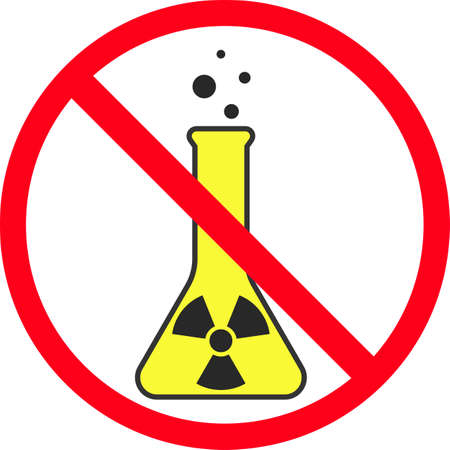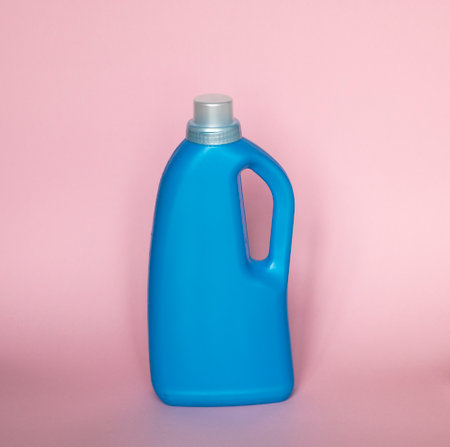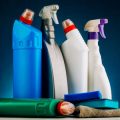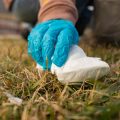Introduction: The Ubiquity of Household Cleaners in UK Homes
Walk into any British home, and you’ll likely find cupboards and shelves filled with a variety of household cleaning products. From kitchen sprays to bathroom bleaches, these cleaners have become staples in our daily routines, helping us maintain the tidy, hygienic environments we value. In fact, recent surveys show that the average UK household uses at least five different cleaning agents on a weekly basis. However, while we reach for these products out of habit and trust in their effectiveness, many of us seldom pause to consider what’s actually inside those bottles—or whether they are truly safe for our families and pets. As concerns about indoor air quality and chemical exposure grow, it’s worth taking a closer look at the widespread use of cleaning products across the UK and examining why their safety deserves our attention.
Common Harmful Chemicals Lurking in UK Cleaning Products
Everyday household cleaners in the UK often promise sparkling results, but a closer inspection of their ingredient lists reveals a less reassuring picture. Many popular cleaning products contain chemicals that can pose health and environmental risks, particularly within the unique context of British homes, which are often older, smaller, and less ventilated than those in other countries. Understanding the main culprits is crucial for making safer choices.
Typical Chemical Ingredients and Their Risks
Below is an overview of some of the most common hazardous chemicals found in UK cleaning products and the specific dangers they present in domestic settings:
| Chemical | Common Uses | Risks in British Homes |
|---|---|---|
| Bleach (Sodium Hypochlorite) | Disinfecting surfaces, toilets, mould removal | Can release toxic fumes, especially when mixed with acids or ammonia; irritates skin and respiratory system; risk heightened in poorly ventilated rooms typical of many UK properties |
| Ammonia | Glass and window cleaners, degreasers | Produces pungent vapours that may cause eye, nose, and lung irritation; reacts dangerously with bleach; compact British kitchens and bathrooms increase exposure risk |
| Synthetic Fragrances | Masks odours in sprays, polishes, air fresheners | Often contain phthalates or allergens linked to asthma and hormone disruption; lingering scents accumulate indoors due to limited airflow in UK homes |
| Quaternary Ammonium Compounds (“Quats”) | Surface disinfectants, antibacterial wipes | Associated with skin irritation and respiratory issues; regular use may contribute to antimicrobial resistance; increased contact risk due to frequent cleaning routines during damp British weather |
| Formaldehyde Releasers (e.g., DMDM Hydantoin) | Preservatives in liquid cleaners and laundry products | A known allergen and potential carcinogen; can off-gas into living spaces—problematic in airtight modern flats or terraced houses with minimal cross-ventilation |
The Unseen Accumulation Effect
The close quarters typical of UK housing mean these chemicals don’t just vanish after use. Instead, they may linger on surfaces or in the air, especially during colder months when windows are kept shut. This ongoing exposure can exacerbate allergies, asthma, and other health conditions—a concern amplified for children, pets, or anyone spending significant time indoors.

3. Health and Environmental Impacts: What Brits Should Know
Many UK households rely on familiar cleaning brands, often without considering the hidden dangers lurking in their ingredient lists. Chemicals like ammonia, chlorine bleach, and synthetic fragrances are commonly found in British homes but can have significant impacts on both personal health and the environment. From a wellbeing perspective, these substances may trigger respiratory issues, skin irritations, or allergic reactions, especially in children, the elderly, and those with pre-existing conditions such as asthma. The enclosed spaces typical of British homes—especially during winter months when windows stay shut—can trap volatile organic compounds (VOCs), leading to poor indoor air quality.
Beyond individual health, the wider environmental effects are equally concerning. When rinsed down sinks or flushed away, many cleaning agents make their way into local waterways. In the UK, this contributes to water pollution and places strain on treatment facilities not equipped to break down complex chemicals. Furthermore, phosphates from detergents encourage algal blooms in rivers and lakes, disrupting local ecosystems and harming aquatic life. The cumulative impact is particularly relevant for communities near vulnerable habitats like the Norfolk Broads or the Lake District.
It’s also worth noting that aerosol sprays and plastic packaging contribute to air pollution and landfill waste, adding to the UK’s broader sustainability challenges. For Brits keen on maintaining both a healthy home and planet, it’s essential to be aware of these risks and seek safer alternatives wherever possible.
4. Spotting Unsafe Cleaners: What to Look Out For
Understanding how to identify potentially harmful cleaning products is crucial for safeguarding your household in the UK. While many cleaners promise a sparkling finish, their contents can sometimes be hazardous. Here are some practical steps for reading labels, recognising warning signs, and making informed decisions when shopping for British household products.
How to Read UK Cleaning Product Labels
All cleaning products sold in the UK are required by law to have clear labelling that includes ingredients, hazard symbols, and safety instructions. Paying attention to these details can help you avoid unsafe options:
| Label Element | What to Look For | Potential Risk |
|---|---|---|
| Hazard Symbols | Corrosive (flame or hand symbol), Toxic (skull and crossbones), Harmful/Irritant (exclamation mark) | Chemical burns, poisoning, respiratory irritation |
| Ingredients List | Sodium hypochlorite, ammonia, formaldehyde, nonylphenol ethoxylates | Toxic fumes, water pollution, skin irritation |
| Precautionary Statements | Phrases such as “Keep out of reach of children”, “Use only in well-ventilated areas”, “Avoid contact with skin” | Indicates higher risk if misused or mishandled |
| Expiry Date & Storage Instructions | Look for clear storage guidance and use-by dates | Ineffective cleaning or increased hazard after expiry |
Common Warning Signs on British Products
- Pungent chemical smell: Strong odours can signal volatile organic compounds (VOCs) or aggressive solvents.
- No full ingredient disclosure: Products without transparent labelling may hide harmful substances.
- Overly broad usage claims: Beware of “kills 99.9% of germs” without specifics—these often contain harsh biocides.
- Unrecognisable brands or imports: Stick with reputable companies following UK/EU regulations.
Navigating the Aisle: Safe Alternatives and Local Resources
If you’re ever unsure about a product’s safety, check resources like the Which?, the Health and Safety Executive (HSE), or local council guidance. Many supermarkets now offer eco-friendly lines clearly labelled as “non-toxic”, “biodegradable”, or “fragrance-free”. Remember: in Britain, less is more—simple vinegar, baking soda, and soap flakes can often replace complex chemical cocktails with fewer risks.
5. Safer Alternatives and Sustainable Swaps for UK Households
Given the hidden dangers lurking in common household cleaners, it’s both practical and responsible to consider safer alternatives that won’t compromise your family’s wellbeing or the environment. Thankfully, British supermarkets now stock an impressive range of eco-friendly cleaning products that are both accessible and effective. Look for brands like Ecover, Bio-D, and Method—these often use plant-based ingredients, avoid harsh chemicals such as bleach and ammonia, and come in recyclable packaging. Most major retailers, including Tesco, Sainsbury’s, Waitrose, and even budget chains like Lidl and Aldi, carry their own lines of environmentally conscious cleaning products.
Simple DIY Cleaning Solutions Using Household Staples
If you prefer to take a more hands-on approach—or simply want to save money—you can create powerful homemade cleaners from everyday items found in most British kitchens. For example:
Bicarbonate of Soda (Baking Soda)
This versatile staple is excellent for scrubbing sinks, deodorising carpets, and removing stains from mugs or tiles. Just sprinkle directly or make a paste with a little water.
White Vinegar
Cheap and widely available in any supermarket, white vinegar is a natural disinfectant. Mix equal parts vinegar and water in a spray bottle to tackle limescale on taps, glass surfaces, or even as a fabric softener substitute in your laundry.
Lemon Juice
The citric acid in lemon juice cuts through grease and neutralises odours. A halved lemon dipped in salt makes a brilliant scrubber for chopping boards or copper pans.
Castile Soap
Available online or in health food shops like Holland & Barrett, Castile soap is gentle yet effective for washing dishes or making an all-purpose cleaner when diluted with water.
Making the Switch: Small Steps Matter
Transitioning to safer alternatives doesn’t have to be overwhelming. Start by swapping out one product at a time—perhaps replacing your all-purpose spray first—and see how the eco-friendly option performs. Over time, these small changes add up to healthier homes and reduced environmental impact without sacrificing cleanliness or convenience.
6. Fostering a Safer Cleaning Culture in Britain
Embracing safer, greener cleaning habits across the UK is not merely about swapping out products; it’s about reshaping our collective approach to maintaining our homes. For generations, many British households have relied on traditional chemical-based cleaners, often trusting well-known brands or family routines. However, with growing awareness of health and environmental concerns, there is a real opportunity to inspire positive change at every level.
Encouraging Community Awareness
Fostering a new cleaning culture begins with open conversations—whether that’s within families, among friends, or in local community groups. Sharing knowledge about the hidden dangers of common household cleaners and discussing eco-friendly alternatives can help debunk myths and normalise safer options. Local councils, schools, and social initiatives can play a vital role by promoting educational campaigns and workshops focused on non-toxic cleaning practices tailored for British homes.
Small Changes, Big Impact
British residents can start with simple habit shifts: reading product labels more critically, opting for refillable containers at local zero-waste shops, and experimenting with homemade solutions like vinegar and bicarbonate of soda. Even choosing microfibre cloths over disposable wipes can make a meaningful difference. Over time, these small steps can collectively reduce exposure to harmful chemicals and cut down on plastic waste in our neighbourhoods.
Leading by Example
Change often starts at home. By modelling responsible cleaning behaviours—such as proper storage of cleaning agents, safe disposal of hazardous products, and prioritising natural alternatives—UK households can influence those around them. Parents, landlords, and community leaders who champion these values help set new standards for safety and sustainability in British living spaces.
The Role of Policy and Industry
While individual actions are crucial, lasting change also depends on policy shifts and industry innovation. Supporting UK-based manufacturers committed to transparency and environmental responsibility sends a powerful market signal. At the same time, advocating for clearer labelling laws and stricter regulations can ensure safer products reach our shelves.
Ultimately, fostering a safer cleaning culture in Britain hinges on both mindset and habit changes. By working together—neighbours, educators, businesses, and policymakers—we can create healthier homes while protecting the environment for future generations.


